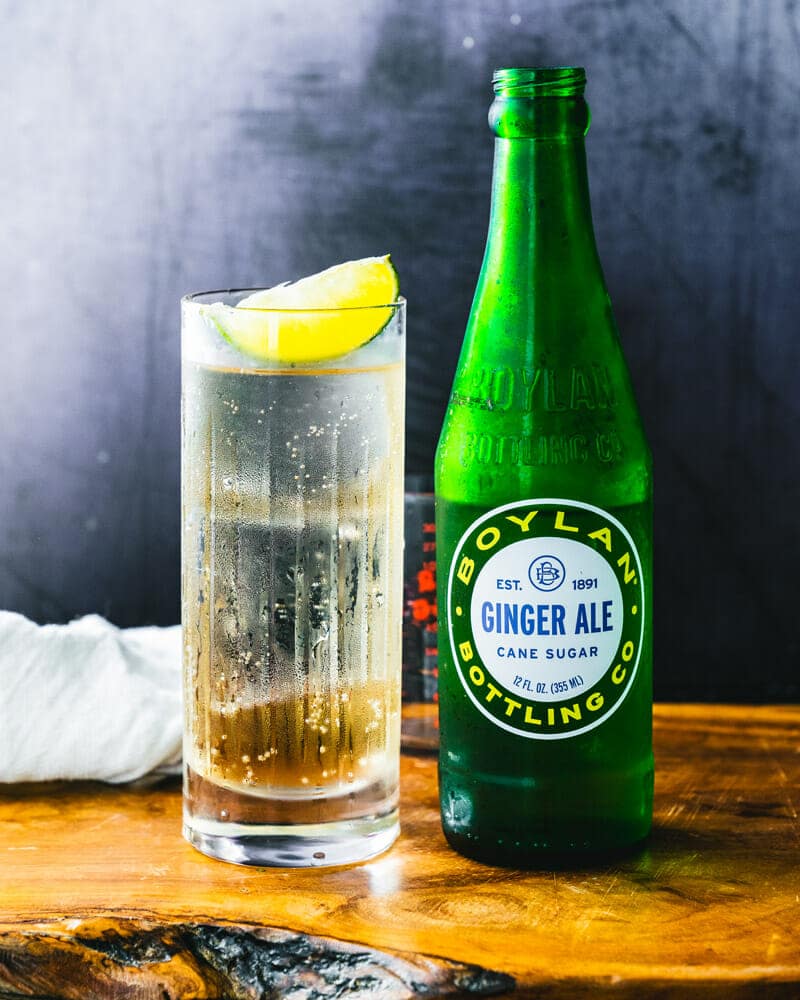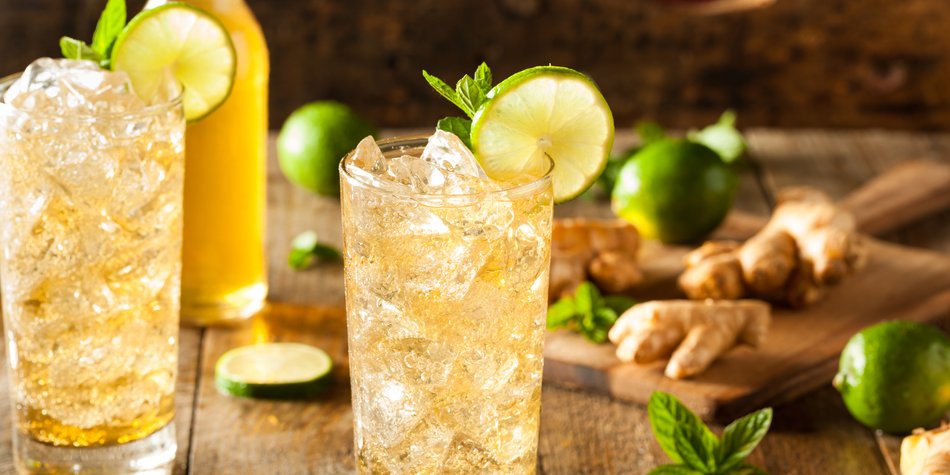
Contents
Ginger Ale Nutrition Facts
Ginger ale may be considered the more subdued sibling of ginger beer. A ginger-flavoured soft drink, it has no alcohol in it. According to legend, it all began in Canada with the invention of Canada Dry ginger ale, which is said to have Irish ancestry.
It is possible to make ginger ale by fermenting ginger bugs, cultures of helpful bacteria, into a drink. Popular on airlines, ginger ale has also been shown to help alleviate stomach aches. Club soda’s moderate flavour makes it a fantastic alternative for this mixer, ideal for cocktails that call for sweet but not overpowering flavours.

Ginger Ale Nutrition Facts Chart
- Fat – 0 g
- Fiber – 0 g
- Calories – 138 gm
- Protein – 0 g
- Sodium – 49.7 mg
- Carb – 36 g
- Sugar – 35 g
- Protein – 0 g
- Sugar is the primary source of carbohydrates in a can of Canada Dry. Ginger ale’s glycemic index is unknown, although the American Diabetes Association advocates drinking water, coffee, and tea instead of sugary sodas.
- Canada Dry does not include any protein. As a result, it fails to provide many advantages associated with getting enough protein, such as enhanced performance and recovery during resistance and endurance exercise and better control over hunger.
- You should know that one can of Canada Dry includes 49.7 grams of sodium, which is especially relevant for those on a reduced-sodium diet. On the other hand, Ginger ale does not provide any added nutrients.
- One can of ginger ale supplies around 7% of your daily caloric intake if you are on a diet of 2,000 calories per day.
- Even though diet ginger ale does not include any calories, research has shown that artificially sweetened drinks may increase a person’s chance of developing diabetes. These sweeteners have been linked to various adverse health effects, including altered brain responses to sweetness and the possibility of weight gain.
- Ginger is a well-known nausea reliever. As a result, ginger-infused beverages may be able to alleviate stomach cramps. Some folks find that the carbonation in ginger ales containing little to no ginger root helps soothe their stomachs.
- Even in the early stages of pregnancy, morning sickness is not unusual among pregnant women. For nausea caused by pregnancy-related hormones, the American Pregnancy Association advises ginger ale soda.
- Some migraine sufferers have found relief from ginger items, such as ginger ale, by drinking them. Migraine drugs and their adverse effects may be lessened if this works for you.
- The anti-inflammatory and anti-oxidative properties of ginger may decrease inflammation in the body. Too much sugar in the diet may cause inflammation, so ginger ale produced with sugar substitutes is an excellent way to combat that.
- Several studies have linked ginger to a decrease in various types of pain. For example, a meta-analysis of five studies indicated that ginger helped lower pain and impairment regarding osteoarthritis. Another research found a link between the use of ginger and the alleviation of menstruation discomfort.
- Particular ginger ale may induce an allergic response for those with a ginger allergy. Brands that use a traditional recipe and genuine ginger, in particular, benefit greatly from this. Ginger ale should be avoided if you suffer from an allergy to the root vegetable.

Additional Information
- Some people may wish to limit their intake of ginger as ginger may raise the risk of bleeding and bruising, blood thinners and those with low blood sugar or low blood pressure.
- Gassiness and bloating are all possible side effects of drinking ginger ale. The carbonation is to blame for these effects found in any carbonated beverage. Diet ginger ale includes sugar alcohols as artificial sweeteners. Bloating and diarrhoea might occur if you drink significant quantities of these sugar substitutes.
- As a result of its thermogenic characteristics, ginger may help you lose weight and enhance your overall well-being.
- In stores across the world, ginger ale is available year-round. To get the advantages of the carbonation, it’s good to eat it within a few days after opening, as is the case with most sodas.
- Simply carbonated water infused with ginger flavouring is ginger ale. There is no alcohol in most of this beverage, despite its name, including “ale.” It is produced using a short-brew technique, which does not allow fermentation and alcohol production. As a non-alcoholic beverage, it has a refreshing taste that many people have throughout the globe. It has possibly even more crucially some of the same antiemetic and anti-inflammatory properties as ginger.
- Ginger beer may be alcoholic, while ale is a non-alcoholic beverage. Although alcohol levels are low at this stage, ginger beer is allowed to ferment (approximately 0.5 per cent compared to 3.5 per cent -6 per cent in most beers). Since ginger beer and ginger ale contain such a tiny amount of alcohol, they may be used interchangeably in certain regions. However, the consistency of ginger beer varies widely.
Summary
In conclusion, Ginger Beer is a spicy and refreshing beverage that is perfect for any occasion. With its unique blend of sweet and spicy flavors, it’s a great way to add some excitement to your drinks. Whether you’re serving it as a non-alcoholic option or using it as a mixer in cocktails, this recipe is easy to make and is sure to be a hit. So, gather your ingredients and give this Ginger Beer recipe a try. Your taste buds will thank you!